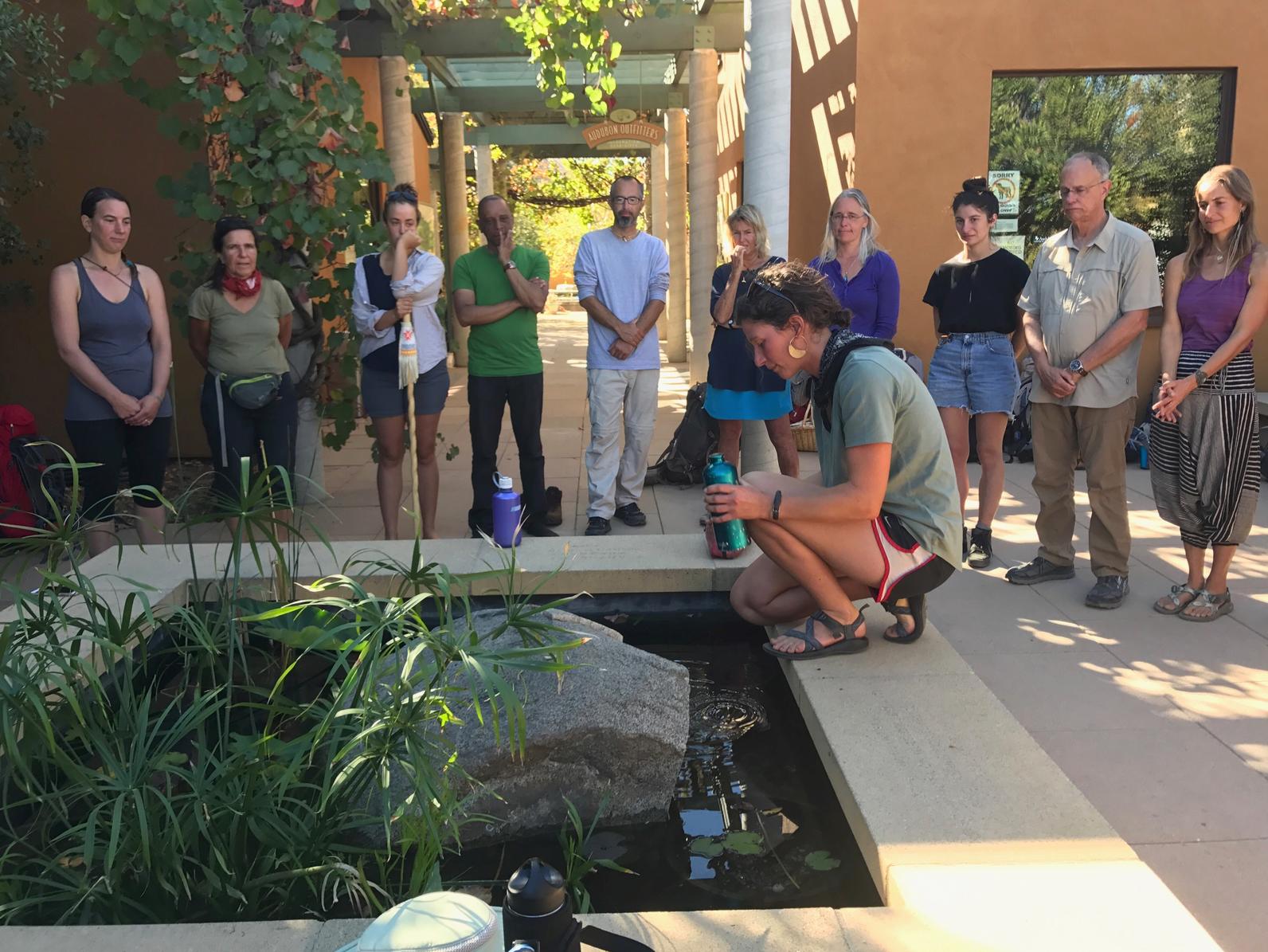
Conservation starts with you. But relationships are the beating heart of any movement. These two fundamental ideas are what organizations like Walking Water and the Audubon Center at Debs Park are all about. When people are connected with one another and with nature, the possibilities for making a positive impact on the world expand.
In October, the Center hosted 40 people organized by Walking Water—individuals who came from all over the globe to join a two-week, 100-mile pilgrimage from the Cascades in Sylmar, Calif., through Los Angeles, and ending in Long Beach. The goal of these walkers for the past two years has been to come together once a year to trace with their footsteps the path of the water that flows from the Owens Valley to Los Angeles. The journey connects them to the source of all life—water—and to one another.
The Audubon Center at Debs Park has fostered relationships with the residents of Owens Valley for many years. Audubon California lists the Owens River, located along the Pacific Flyway, as an Important Bird Area. When LADWP diverted the river flow from Owens Lake to a newly constructed Los Angeles Aqueduct in 1913, the lake became desiccated, which jeopardized a key rest stop for migratory birds. But this century-long conflict isn’t only about ecology and wildlife. The people of the Owens Valley, including the Paiute tribe who first inhabited the area, live with the economic and environmental fallout every day.
Representatives from the Paiute and Tongva (the first peoples of Los Angeles) tribes communed with the walkers on their visit to the Audubon Center. Marcos Trinidad, director of the Center, recounts a moment that moved him in this meeting of two tribal nations: “The ceremony that the Paiute and Tongva held, when the Paiute came out and said, ‘For years, Los Angeles has been taking our water.’ And then they reached into their bag and pulled out a canteen of water and poured some into a cup and said, ‘Now we’re giving it to you.’ It really represented everything that we’ve been working for.”

Gathered in a circle, the walkers, indigenous elders, activists, and community members witnessed Paiute children bless the space with their traditional dances. Then, one by one, each person was asked to say their name and their native land aloud. From India to Kenya to England to LA, it was clear that water rights are a global issue.
A roundtable discussion commenced, with an inner circle of elders and youth asked to discuss what are the possibilities for the future of water. Paiute and Tongva youth called for water education programs to be integrated into schools. Rajendra Singh, a well-known water conservationist from India, talked about how teaching villagers responsible water management techniques had brought endangered tigers, which hadn’t been seen in Rajasthan in many years, back to the area.
Orland Bishop, founder and executive director of ShadeTree Multicultural Foundation in Los Angeles, brought up sovereignty. He cited that the Bloods and Crips gangs of LA were able to orchestrate peace amongst themselves when it became clear to both sides that their communities desperately needed it. His point was that communities know inherently what they need, and they hold the power to usher in big, history-making changes.
The Audubon Center at Debs Park aims to engage local residents in preserving the natural spaces in their own neighborhoods. “For us, it’s about example,” Trinidad says. “We’re completely off the grid, we’re an example of what the community or what Los Angeles can achieve in relationship with a native habitat, environmentally-friendly material, and that connection to a space.”
Advocacy for the water and land rights of indigenous tribes, including the Tongva and the Paiute, is also a relevant piece of the puzzle. Indigenous peoples embody ancestral wisdom of stewardship. Their stories and traditions are priceless in educating city dwellers about their own roles and responsibilities in water conservation, at home and throughout the world. “I feel that if we can continue to support that and include our youth and learn from them, but also share with them what we’ve learned through experiences, failures, and other interactions with elders and community members, we’re gonna figure out a lot more,” Trinidad says.
Conservation may start with the individual—but a unified consciousness among fellow humans could make all the difference in the future of our water and natural spaces.
By Dana Poblete



